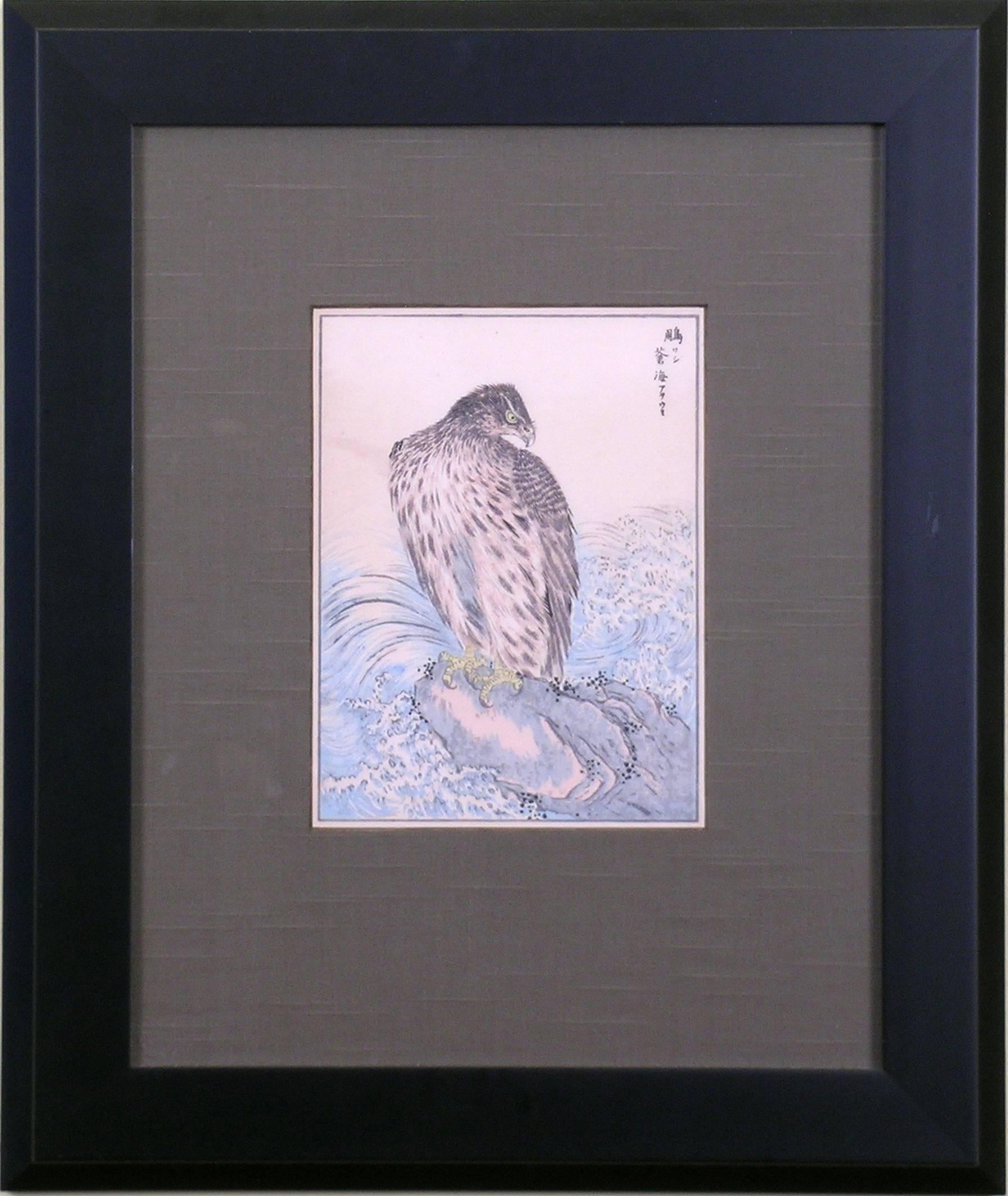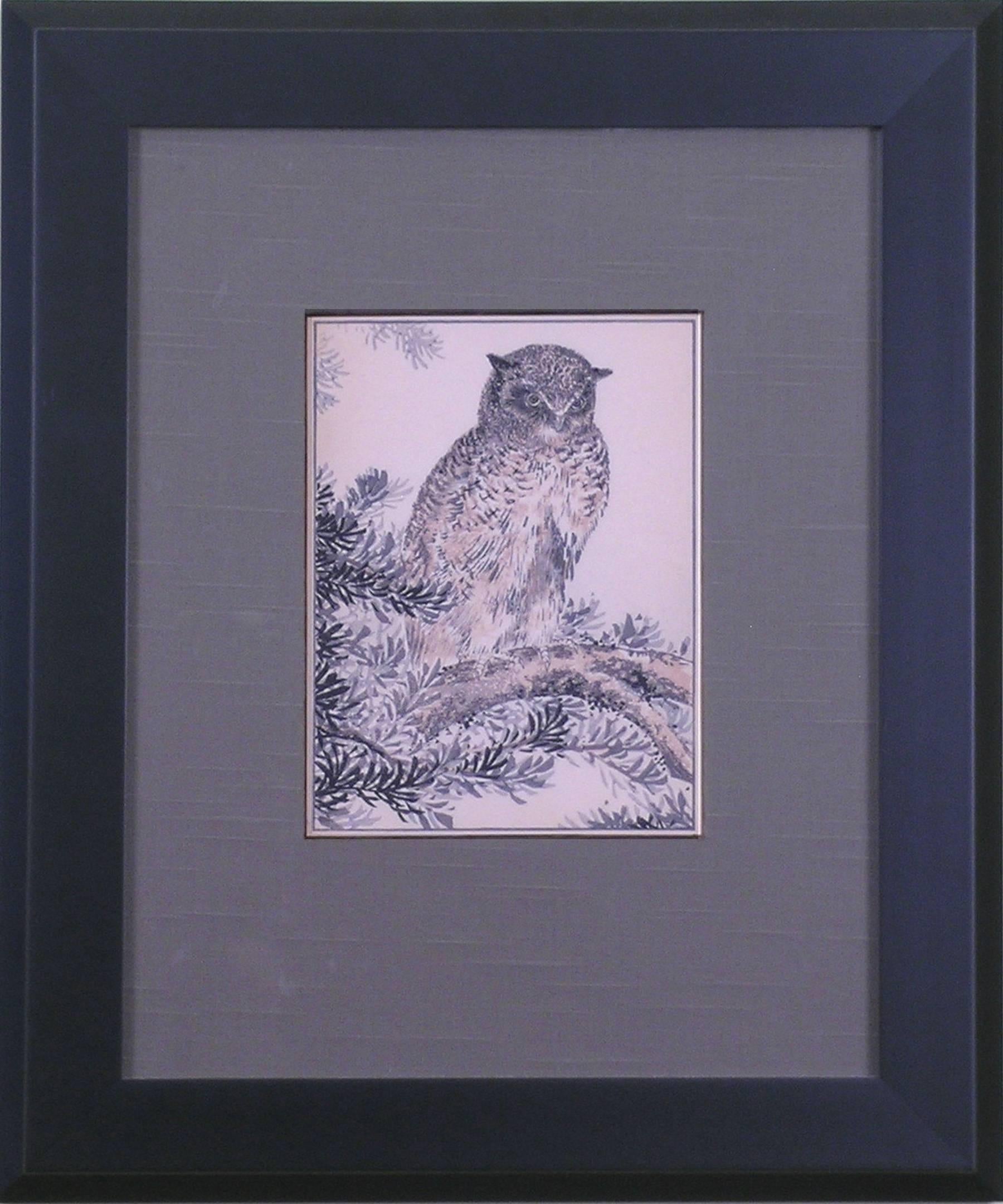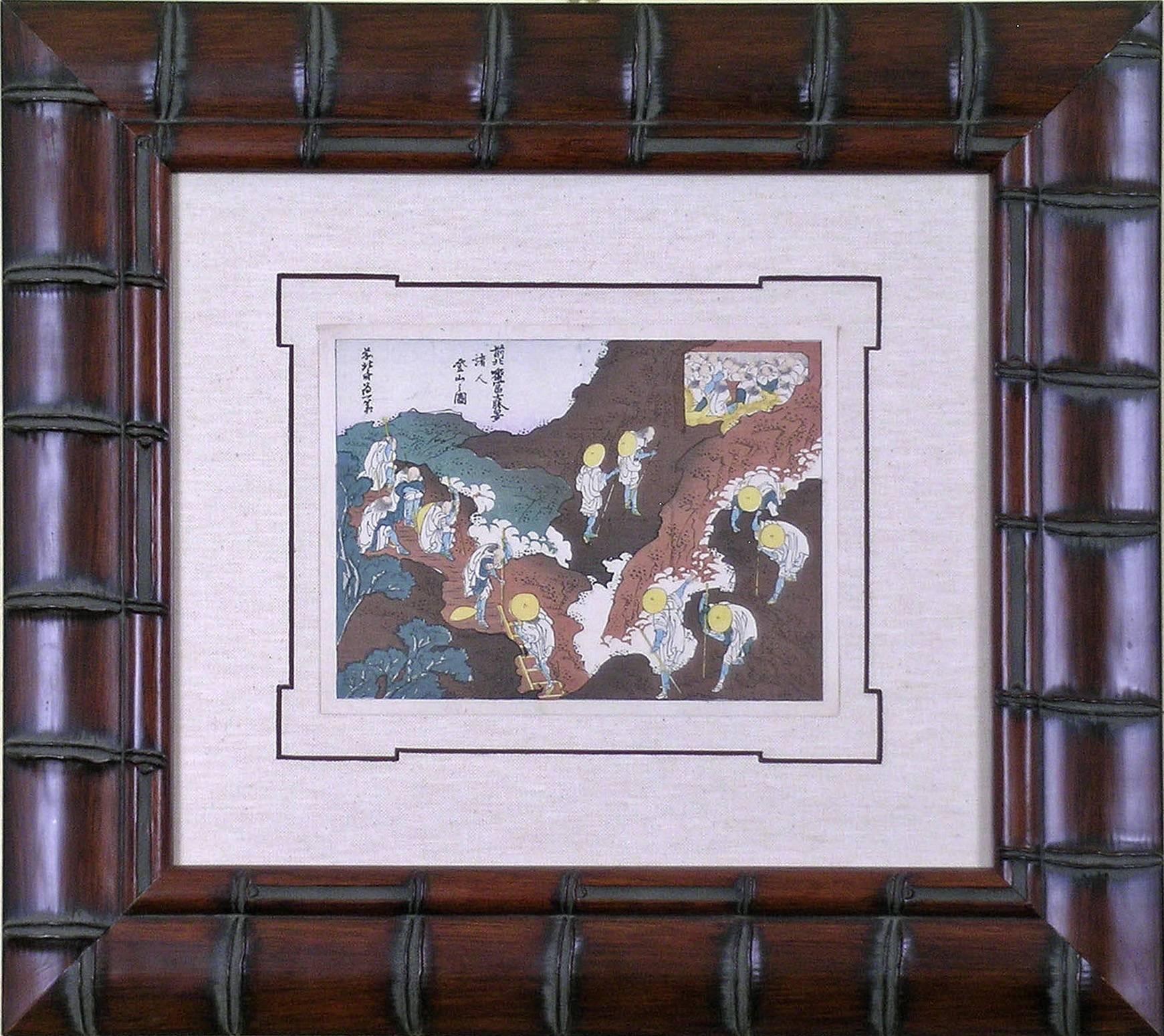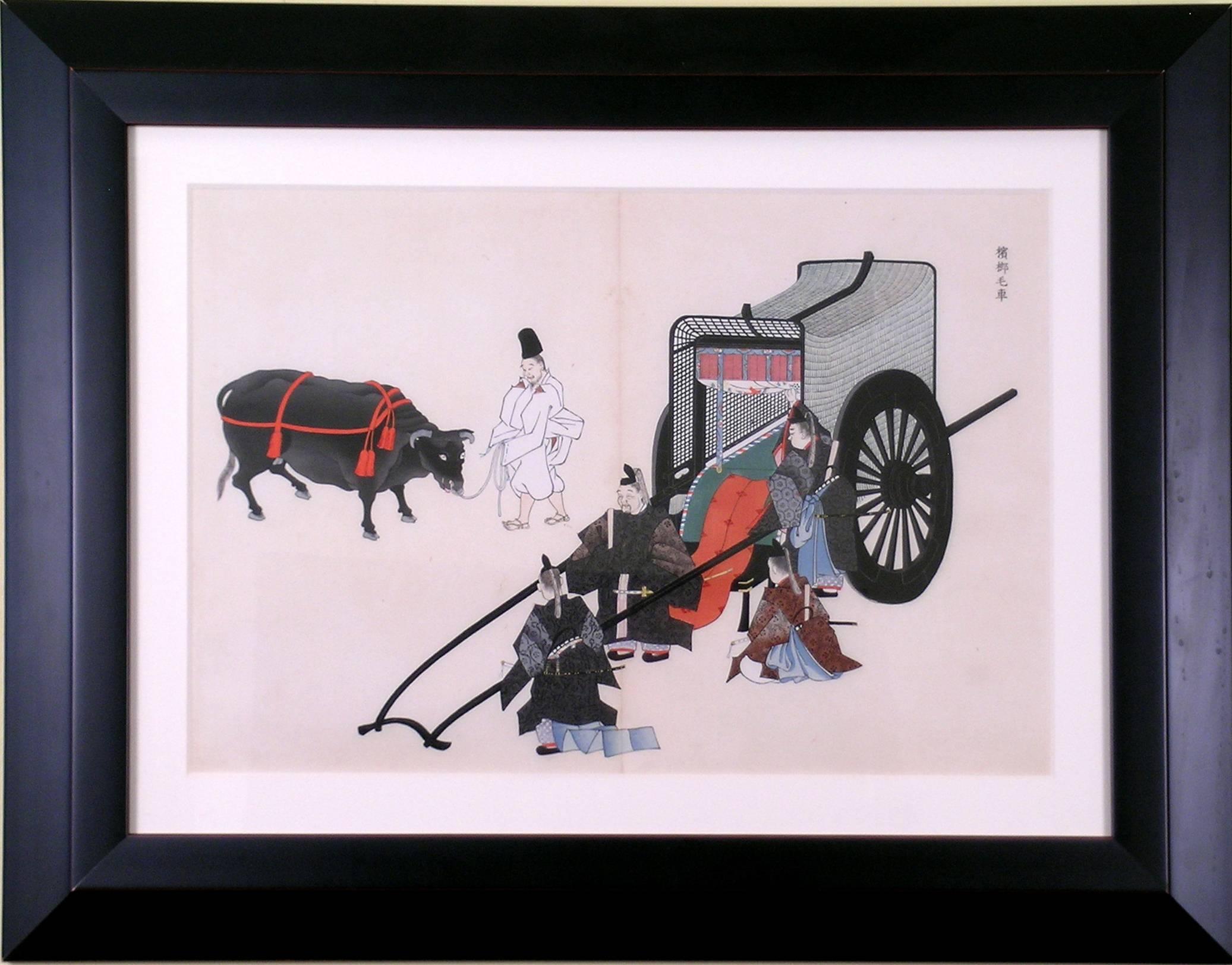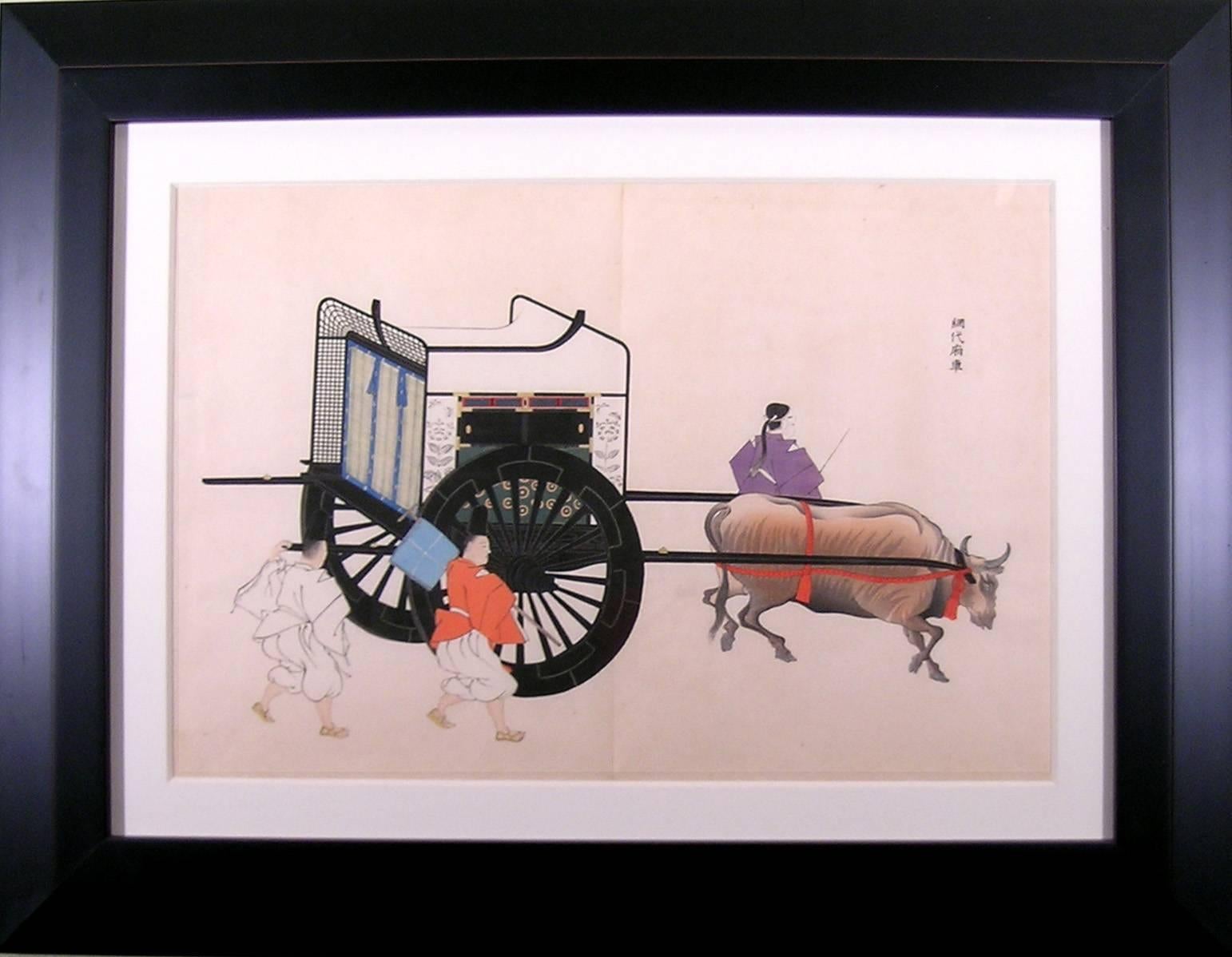Want more images or videos?
Request additional images or videos from the seller
1 of 7
Keika HasegawaChrysanthemum (Copper #3)1895
1895
About the Item
100 Chrysanthemums
Keika Hasegawa
Kyoto, Japan
Meji Era (ca. 1895)
Japanese Woodblock
Printed in Color with some
Touching by Hand
Paper Size:
Search listings for companion pieces.
Keika Hasegawa was active from 1893-1905. His most famous work is 100 Chrysanthemums, a glorious celebration of Japan’s most famous flower. As the Imperial Seal of the Emperor, the chrysanthemum gained notoriety as Japan’s favored emblem. Members of the royal family would compose seals with variations on that of the emperor. Using the Imperial Seal of the Chrysanthemum was limited to the emperor who sat on the Chrysanthemum Throne, the oldest continuing monarchy in the world. In Japan, the Order of the Chrysanthemum is the highest honor anyone can receive. It is said that the unfolding of this flower is a symbol of perfect order. Keika Hasegawa’s work is a wondrous collection of the many examples of this surprisingly varied botanical species. There is even a "Festival of Happiness" to celebrate this flower each year.
Woodblock printing flowered in the Edo Period, mid to late 19th century, and is still considered an art form of great precision and beauty. Keika Hasegawa captures both the vitality and life inherent in the chrysanthemum in each color woodblock print. Following the artist sketch, an image is carved into a block of wood. Black inks form the outline of the flower and color inks are applied to specific areas. The woodblock is then pressed to hand-made screened paper which is then hung to dry. The entire process of composing a single image can take weeks.
Keika Hasegawa chose beautiful flowers from both domestic gardens and the wild fields of Japan at the end of the 19th century. These are original antique woodblocks from an era of printing, art and design that is as ageless as the glorious chrysanthemum itself.
- Creator:Keika Hasegawa (1893 - 1905, Japanese)
- Creation Year:1895
- Dimensions:Height: 20 in (50.8 cm)Width: 17 in (43.18 cm)
- Medium:
- Movement & Style:
- Period:
- Condition:Clean, crisp image. Original hand-coloring. Framed to museum specifications using archival matting, backing, hinging. Custom design mat opening with hand-painted bevel. Glazed with ultra-violet filtering Plexiglas.
- Gallery Location:Florham Park, NJ
- Reference Number:
About the Seller
5.0
Vetted Seller
These experienced sellers undergo a comprehensive evaluation by our team of in-house experts.
1stDibs seller since 2014
161 sales on 1stDibs
Typical response time: 2 hours
- ShippingRetrieving quote...Ships From: Florham Park, NJ
- Return PolicyA return for this item may be initiated within 1 day of delivery.
More From This SellerView All
- Red Men's Kimono DesignBy Matsui YuokuLocated in Florham Park, NJREISHIN GACHO (Album of Beautiful Designs) Japanese Kimono Designs Matsui Yuoku, Painter Japan, 1900 (Meiji 33) Honda Ichijirou, Publisher Woodblock P...Category
Early 1900s Academic Prints and Multiples
MaterialsWoodcut, Watercolor
- HawkBy Kono BaireiLocated in Florham Park, NJKono Bairei (1844 – 1895) Kacho-ga. (Birds and Flowers) Japan, c1880 Woodblock Print. 15 x 11. Okura Magobei, Publisher. The enthusiasm for nature prints transcends the centuries. “One Hundred Flowers” is a mid-nineteenth century work illustrating varieties of flowers in naturalistic styles. Traditional woodblock printing enhances the beauty of each work. The artist must carve different woodblocks for every color he wishes to transfer to paper. In this style of printing it is imperative that the register of each woodblock be exact as they must match perfectly to create an image without blurring. In addition to his illustrated flower books...Category
Late 19th Century Academic Prints and Multiples
MaterialsWoodcut, Watercolor
- OwlBy Kono BaireiLocated in Florham Park, NJKono Bairei (1844 – 1895) Kacho-ga. (Birds and Flowers) Japan, c1880 Woodblock Print. Okura Magobei, Publisher. The enthusiasm for nature prints transcends the centuries. “One Hundred Flowers” is a mid-nineteenth century work illustrating varieties of flowers in naturalistic styles. Traditional woodblock printing enhances the beauty of each work. The artist must carve different woodblocks for every color he wishes to transfer to paper. In this style of printing it is imperative that the register of each woodblock be exact as they must match perfectly to create an image without blurring. In addition to his illustrated flower books...Category
Late 19th Century Academic Prints and Multiples
MaterialsWoodcut, Watercolor
- Men on the MountainBy Katsushika HokusaiLocated in Florham Park, NJFUGAKU HYAKKEI Views of Mt. Fuji Katsushika Hokusai (1760-1849) Woodblock Print 1834-5 Edo period It signifies the long history and the aspirations of the race; it is a token ...Category
Mid-19th Century Academic Prints and Multiples
MaterialsWoodcut, Watercolor
- Oxcart with 5 Men and 1 OxBy Yosha Zuko FuzuLocated in Florham Park, NJYosha Zuko Fuzu Meiji 33 (1900) Woodblock with Original Hand-Coloring Writer: Kosugi Onson, Imaizumi Teisuke Publisher: Yoshikawa Hanshichi The Japanese litters and palanquins...Category
Early 1900s Academic Figurative Prints
MaterialsWoodcut, Watercolor
- Oxcart with 3 MenBy Yosha Zuko FuzuLocated in Florham Park, NJYosha Zuko Fuzu Meiji 33 (1900) Woodblock with Original Hand-Coloring Writer: Kosugi Onson, Imaizumi Teisuke Publisher: Yoshikawa Hanshichi The Japanese litters and palanquins...Category
Early 1900s Academic Figurative Prints
MaterialsWoodcut, Watercolor
You May Also Like
- Greek Architecture Blueprint of Ancient Amphitheatre Cyanotype Print, WatercolorBy Kind of CyanLocated in Barcelona, ESThis is an exclusive handprinted limited edition cyanotype. Details: + Title: Ancient Roman Amphitheater + Year: 2022 + Edition Size: 50 + Stamped and Certificate of Authenticity provided + Measurements : 70x100 cm (28x 40 in.), a standard frame size + All cyanotype prints...Category
2010s Academic Still-life Photography
MaterialsPhotographic Film, Woodcut, Emulsion, Watercolor, C Print, Color, Lithog...
- Venice, View of the Grand Canal - Original etching and watercolor, 1831By Dionisio MorettiLocated in Paris, FRDionisio MORETTI View of the Grand Canal, 1831 Original etching Finely enhanced by hand with watercolor On vellum 26 x 41 cm (c. 10.2 x 16 inch) ...Category
1830s Academic Landscape Prints
MaterialsEtching, Watercolor
- Venice, Rialto Bridge - Original etching and watercolor, 1831By Dionisio MorettiLocated in Paris, FRDionisio MORETTI Venice, Rialto Bridge, 1831 Original etching Finely enhanced by hand with watercolor On vellum 26 x 41 cm (c. 10.2 x 16 inch) Ve...Category
1830s Academic Landscape Prints
MaterialsEtching, Watercolor
- Venice, Santa Chiara Island - Original etching and watercolor, 1831By Dionisio MorettiLocated in Paris, FRDionisio MORETTI Venice, Santa Chiara Island, 1831 Original etching Finely enhanced by hand with watercolor On vellum 26 x 41 cm (c. 10.2 x 16 inc...Category
1830s Academic Landscape Prints
MaterialsEtching, Watercolor
- Bird and Beetle - Etching and watercolor (Natural History of Birds, 1741)By George EdwardsLocated in Paris, FRGeorge EDWARDS Bird and beetle ('The Gowry Bird') Original engraving, enhanced with watercolor Printed signature in the plate Dated, 1741 28.8 x 23.3 cm Created for Volume I of the...Category
1740s Academic Animal Prints
MaterialsWatercolor, Engraving
- Louis I of France as a Roman Emperor, in profile to the rightBy Christoffel JegherLocated in Fairlawn, OHLouis I of France as a Roman Emperor, in profile to the right Chiaroscuro woodcut, 1631-1633 Unsigned (as usual) After a drawing by Hubert Goltzius (1526-1583)...Category
17th Century Academic Portrait Prints
MaterialsWoodcut, ABS
Recently Viewed
View AllMore Ways To Browse
Antique Copper Art
3 Block
Copper Flower
Antique Copper Canner
Wild Field
Antique Copper Collection
Antique Copper Colour
Antique Copper Color
Chrysanthemums In Art
Chrysanthemum Japanese
Chrysanthemum Japan
Antique Print Block
Japanese Block Prints
Japaneses Block Print
Japan Antique Screens
Antique Copper Still
Antique Copper Stills
Copper Still Antique

